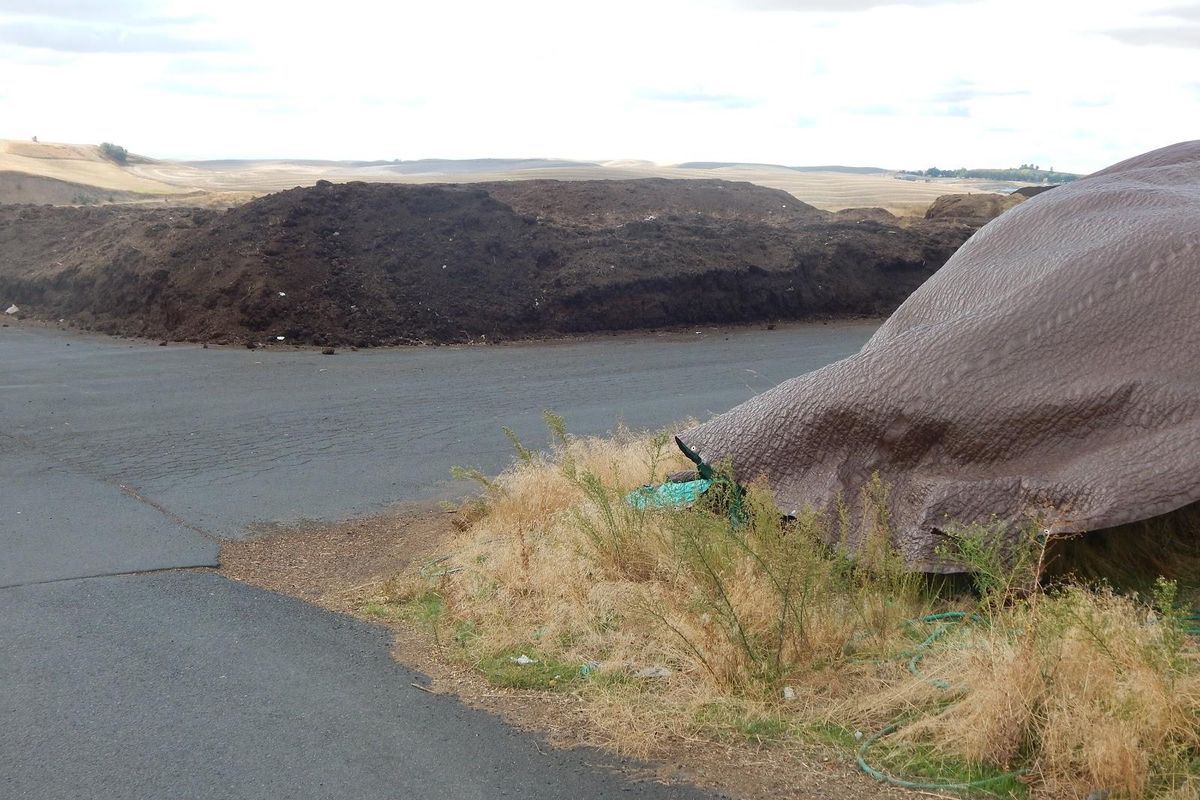Composting human bodies is an aim of WSU researchers

A chain link fence, a biohazard warning sign and barbed wire separate the public from Washington State University’s body composting facility. Inside, rows of material are made up of piles of bark, composted organic materials and decomposing livestock remains.
Currently, only animals are buried in the facility, but it could soon be a destination for the remains of people who donate their bodies to science.
“That will require not only showing that it works,” said Lynne Carpenter-Boggs, an associate professor of Crop and Soil Sciences, “but that people will want it and that it can be done in an urban-suburban setting.”
Carpenter-Boggs has partnered with a Seattle group to seek approval to begin a pilot study on composting human bodies. She has studied livestock composting for years.
“It’s a very strange thing because it works great,” Carpenter-Boggs said, “but nobody who doesn’t have to likes to talk about it because there’s almost an instant yuck factor.”
Carpenter-Boggs said finding a burial plot is almost impossible in urban areas such as King County, so cremation is often the only option for families burying a loved one.
“There are increasingly places where it doesn’t even matter if you have a lot of money,” she said. “You can’t be buried. You have to go somewhere else.”
In addition to concerns about space, the chemicals used to embalm bodies can have environmental consequences. Today, about 75 percent of people in Washington choose cremation, but that also has environmental impacts.
Carpenter-Boggs said farmers commonly dispose of dead livestock by composting it as they would other waste, and they are encouraged to do so by the state Departments of Agriculture and Ecology.
Carpenter-Boggs has researched composting for several years and is active in Recompose, a Seattle-based corporation researching environmentally friendly burial options.
Katrina Spade, founder of Recompose, said she approached Carpenter-Boggs four years ago after discovering her research on livestock composting.
“I had the concept before I spoke with her,” Spade said, “ but I knew that she would be potentially a source of information and had research expertise around it.”
If Carpenter-Boggs gets her study past a WSU ethics committee that reviews animal and human-based research, she can begin work on a pilot study. Last summer, she applied for permits to modify the university’s existing in-vessel composting facility, updating the air filtration system to contain any odors the decomposition may create. It sits at the end of Dairy Road on the WSU campus in Pullman.
The composter, which is 66 feet long and 5 feet in diameter, would be divided into three sections to isolate the human body composting from other composting.
“We’re moving toward a more controlled process,” Carpenter-Boggs said.
In addition to testing, the study would also look at what composting materials would most effectively break down bodies and have the best airflow, which is needed to reduce odors.
Carpenter-Boggs said she can’t put exact dates on when the pilot study will begin. She said the next phase is working with Recompose to create a budget and finalize the study’s parameters.
Nora Menkin, a managing funeral director in Seattle, said there are ethical issues in composting human remains. She said it would be up to families and individuals to decide what they want done with their deceased loved ones.
Composting bodies is more natural than cremation or the kind of burial common today, Menkin said.
“Humans have been doing it for thousands of years,” Menkin said. “This is just a way of replicating that process.”
Carpenter-Boggs said Washington law does not address the legality of composting human remains. She said her research will explore not only materials and processes, but she also hopes to understand the overall legal and social feasibility of composting.
Burial, composting and cremation are not the only options however. Several states, including Idaho, Oregon and California, now allow a process similar to cremation called alkaline hydrolysis.
According to a study published by Gordon I. Kaye and Peter B. Weber in 1998, the method originally was used to dispose of animal carcases. Remains are mixed with water and a solution made up of corrosive chemicals, such as sodium hydroxide, heated and then dissolved, leaving only bone and metal fragments.
Currently, there is no law surrounding this disposal method in Washington.
The Urban Death Project, the predecessor organization to Recompose, collaborated with Western Carolina University in 2015 and 2016 to determine the most efficient method of composting human remains. Using bodies donated to science, the studies used wood chip beds with various composting materials to determine which mix worked best.
Kathleen Brennan, Western Carolina’s Anthropology and Sociology Department chairwoman, said via email that over the course of a year, multiple bodies were successfully decomposed.
Spade said Remcompose is currently only working with WSU on body decomposition research.